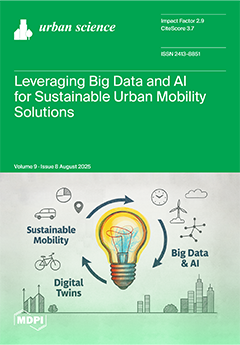Sustainability has an ever-increasing importance in our lives, mainly due to climate changes, finite resources, and a growing population, where each of us is called to make a change. Although climate change is a global phenomenon, our individual choices can make the difference.
[...] Read more.
Sustainability has an ever-increasing importance in our lives, mainly due to climate changes, finite resources, and a growing population, where each of us is called to make a change. Although climate change is a global phenomenon, our individual choices can make the difference. The transportation sector is one of the largest contributors to global carbon emissions, making the transition toward sustainable mobility a critical priority. The adoption of electric vehicles is widely recognized as a key solution to reduce the environmental impact of transportation. However, their widespread acceptance depends on various technological, behavioral, and economical factors. Within this research we use as an artifact the CO
2 Emission Management Gauge (CEMG) devices to better understand how the manufacturers, with integrated features on vehicles, could significantly enhance sales and drive the movement towards electric vehicle adoption. This study proposes an innovative new theoretical model based on Task-Technology Fit, Technology Acceptance, and the Theory of Planned Behavior to understand the main drivers that may foster electric vehicle adoption, tested in a quantitative study with structural equation modelling (SEM), and conducted in a South European country. Our findings, not without some limitations, reveal that while technological innovations like CEMG provide consumers with valuable transparency regarding emissions, its influence on the intention of adoption is dependent on the attitude towards electric vehicles and subjective norm. Our results also support the influence of task-technology fit on perceived usefulness and perceived ease-of-use, the influence of perceived usefulness on consumer attitude towards electric vehicles, and the influence of perceived ease-of-use on perceived usefulness. A challenge is also presented within our work to expand CEMG usage in the future to more intrinsic urban contexts, combined with smart city algorithms, collecting and proving CO
2 emission information to citizens in locations such as traffic lights, illumination posts, streets, and public areas, allowing the needed information to better manage the city’s quality of air and traffic.
Full article





